As a rule of thumb, it costs about $20-$80 to change a motorcycle tire. If you take off the wheels and bring them into a shop you can expect to pay $20-$40 per wheel. But if you bring the whole bike into the shop be prepared to pay $40-$80 per wheel, in addition to the cost of the tires of course. Some dealerships may quote you much more, but don’t be ripped off!
If you want to learn more about motorcycle tire change costs, you are in the right place.
We at PowerSportsGuide have gathered the average prices as well as the cheapest solutions under one roof!
How much does it cost to change motorcycle tires?It’s safe to say that the cheapest way to change motorcycle tires would be if you do the work yourself. However, as you will see, this is not recommended for security reasons.
A reputable shop can not only professionally mount your tires, but they also balance the wheels with a special rebalancing machine.
Balancing the wheels is very important since only a slight weight difference can lead to vibration. That’s why it’s recommended that you get the tire change done by a professional who can rebalance the wheels along with changing the tires.
Moreover, many shops offer a discount or don’t even charge for the change if you buy the tires from them.
You can also keep your costs low if you pull the wheels off yourself and bring them into the shop. This way it will cost about $40-$80 to change a pair of motorcycle tires.
On the other hand, many riders simply prefer riding to a dealership or a local shop to get the tire change done. This is arguably the most convenient solution, but also the most expensive!
If you are also considering visiting a shop, it’s recommended that you shop around to find the best rates available. The labor costs vary widely depending on the size and location of shop.
As you may assume, you can expect the highest rates at authorized dealerships. It’s not uncommon for dealers to quote $150-$400 to change motorcycle tires!
It’s not uncommon for dealers to quote $150-$400 to change motorcycle tires!
In contrast, small local shops are significantly cheaper, as they usually charge $80-$160 for the entire job.
It’s also good to know that replacing the tire on the front wheel is always significantly cheaper than the rear, a 50% difference in price between the two wheels is not uncommon.
However, best practice is to replace both tires at the same time!
Can I change a motorcycle tire myself? – we get this question a lot and the answer is that it depends. Although it is possible to change the tires on your motorcycle at home, in most cases this is not recommended. Why?
When it comes to motorcycles, the primary consideration should always be safety.
And improperly mounted tires can be dangerous in many ways, so it’s not worth the risk of gambling with them! Contrary to popular belief, changing tires requires skill as well as some specialized tools.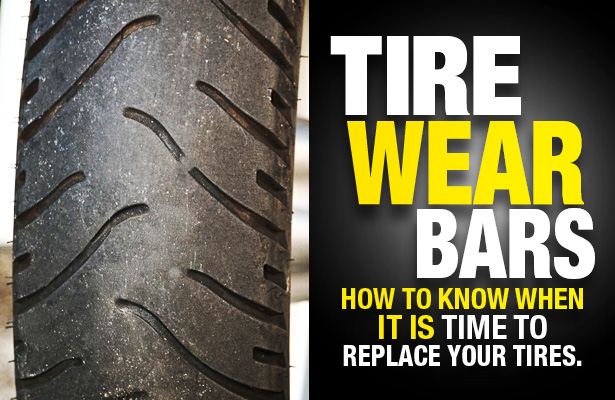
Even if you can properly mount the tires, you always risk scratching the rims or damaging the new tires.
Additionally, a professional shop not only changes the tires, but their service typically includes the balancing, lining, setting the chains tight, and a test ride as well.
Although you can do all of these tasks yourself, it still takes time and effort. It may take hours just pulling the wheels off, mounting and inflating the tires, and finally balancing and replacing the wheels.
This is why best practice is to get it done by a tire shop. Let’s see where you can find one!
It’s safe to say that the majority of tire shops can change motorcycle tires, even dedicated auto tire shops. In most cases, it makes sense to visit a local shop rather than ride many miles to a dealership. What’s more, local shops are typically much cheaper as well! But to make sure they can handle the change it’s worth a phone call first.
In most cases, it makes sense to visit a local shop rather than ride many miles to a dealership. What’s more, local shops are typically much cheaper as well! But to make sure they can handle the change it’s worth a phone call first.
Whether you can change a motorcycle tire on a car tire machine is strictly dependent on its design. While many older machines could change motorcycle tires without any issues, modern machines clamp on the rim and feature a rotating table. This means if you want to change a motorcycle tire on these machines you will likely need an adapter, which holds the wheel higher off the rotating table.
Unfortunately, many of the newest car tire machines can’t be used at all to change motorcycle tires.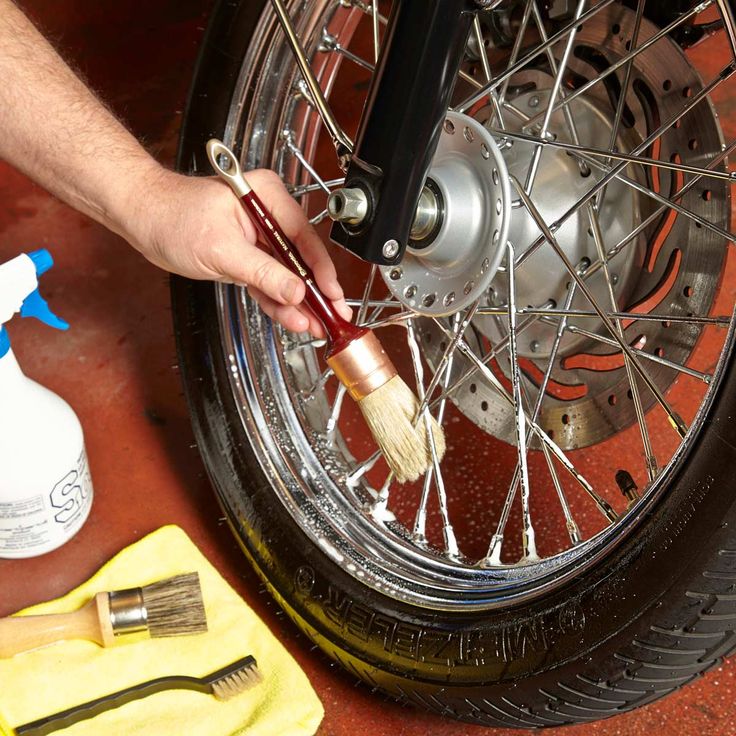 This is because some manufacturers don’t provide adapters for motorcycle wheels.
This is because some manufacturers don’t provide adapters for motorcycle wheels.
If you have access to a tire machine and are considering replacing the tires yourself, make sure to have somebody close by who is familiar with using the machine.
Operating a tire machine is not rocket science, but like any other power tool it can be dangerous in many ways. Doing it wrong can damage the tire or even the surface of the rim!
If you want to change the tires on your motorcycle you have four options:
DIY tire replacement: Even if this is the cheapest way to change the tires unless you’re an experienced mechanic it’s not recommended that you do it yourself. Keep in mind that doing it wrong can damage the tires or even the rims. Keeping safety in mind, best practice is that you leave it for professionals.
Remove the wheels: Many riders prefer pulling the wheels and bring into a local shop or a dealership, so you may want to consider this solution.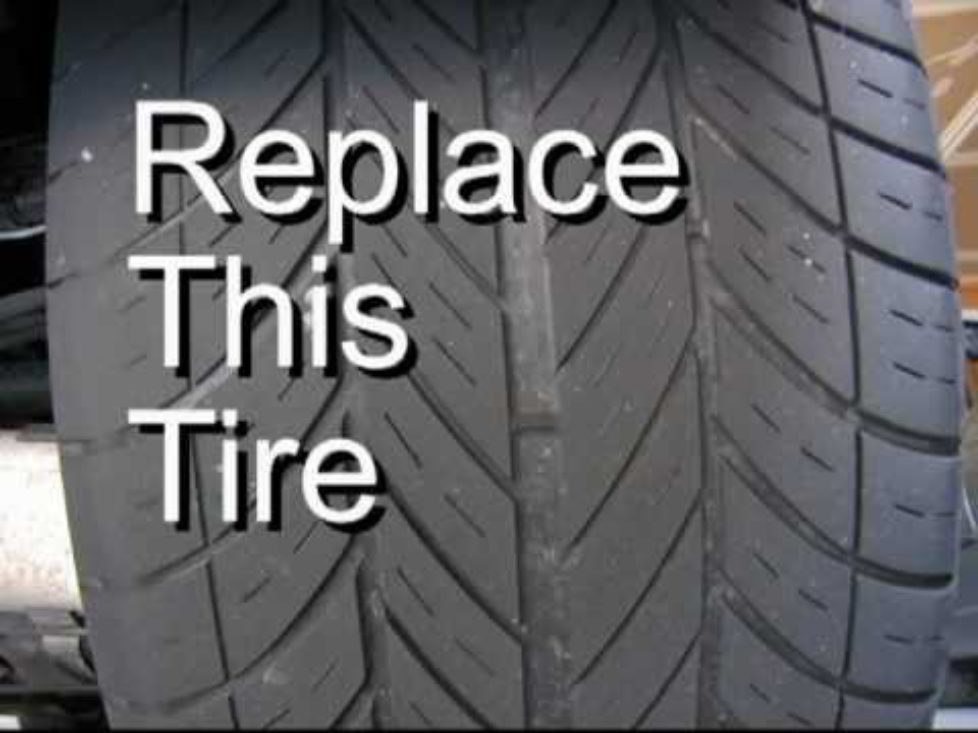 This way, you can get much better rates while making sure that the tires are professionally replaced and balanced. If you bring the wheels in yourself, changing a pair of motorcycle tires typically costs $40-$80 in most tire shops.
This way, you can get much better rates while making sure that the tires are professionally replaced and balanced. If you bring the wheels in yourself, changing a pair of motorcycle tires typically costs $40-$80 in most tire shops.
Ride to a tire shop/dealership: The most convenient solution is arguably riding into a tire shop or a dealership to get the job done. The rates of smaller tire shops range from $40 up to $80 while dealerships can even quote $150-$400!
The rates vary widely depending on the size and the location of the shop, so it makes sense to shop around before making a decision!
Sooner or later, your motorcycle will need a new pair of tires. Choosing the right set of rubber for your ride will keep your motorcycle feeling confident and planted, but with so many tire choices on the market today, this can be a difficult decision.
Best Motorcycle Tires for 2022
Don’t worry! We’ve done all the research for you, no matter what you ride.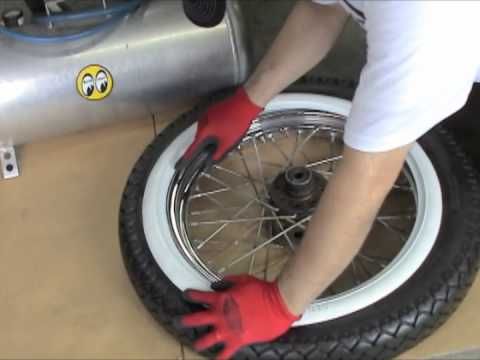 To make things even easier, we’ve selected two options in each of our tire categories so you can fine-tune your choice to the type of riding you enjoy most.
To make things even easier, we’ve selected two options in each of our tire categories so you can fine-tune your choice to the type of riding you enjoy most.
At RevZilla, our obsession with riding means we put miles on all kinds of tires in all kinds of terrain. We also have countless points of customer feedback to reference, plus our tire experts, which means we know which tires outperform the rest. Let’s take a look at our top tire choices for 2022.
|
Tires |
Category |
Price (pair) |
Details |
|---|---|---|---|
|
Dunlop Sportmax GPR300 |
Best budget street tire (17-inch) |
$69-$120 |
|
| Shinko 777 |
Best budget street tire (other sizes) |
$73-237 |
|
| Continental Road Attack 3 |
Best sport-touring tire |
$310-$370 |
|
| Michelin Commander III Touring |
Best cruiser touring tire |
$300-$450 |
|
| Metzeler Cruisetec |
Best cruiser commuter tire |
$330-$420 |
|
| Michelin Road 5 |
Best sport/street tire |
$400-$450 |
|
| Dunlop Q3+ |
Best sport tires |
$375-$410 |
|
| Continental TKC70 |
Best on-road ADV tires |
$300-$420 |
|
| Continental TKC80 |
Best off-road ADV tires |
$375-$426 |
|
| Bridgestone M59 |
Best front woods dirt tires |
$145-$185 |
|
| Shinko 525 Hybrid Cheater |
Best rear woods dirt tires |
$145-$185 |
|
If you’re on a sport bike, a naked, or just about anything with 17-inch wheels, and you don’t want to blow the budget on tires, we highly recommend the Dunlop Sportmax GPR300s. They’re around $200 per pair, and that’s a bargain for their performance and longevity.
They’re around $200 per pair, and that’s a bargain for their performance and longevity.
Dunlop Sportmax GPR300 tires. RevZilla photo.
These tires were actually our choice for the $1000 Track Bike Showdown! CTXP episode with Ari and Zack, if you want to see them in action. They’re an ideal choice for everything from commuting to spirited riding. We find that the GPR300 rear tires are good for about 5,000 miles.
For riders with cruisers, standards, and vintage bikes, the GPR300 isn’t an option because it is only available for 17-inch wheels. A set of Shinko 777s is our pick for riders shopping classic or modern classic tire sizes. These tires are around $250 per pair (varies depending on size) and provide confidence on the street with commendable wet weather grip.
Shinko 777 tires. RevZilla photo.
The tradeoff for the affordable price and performance is less-than-stellar longevity of 4,000 to 8,000 miles from the rear tire, depending on weight, pressure, and other conditions.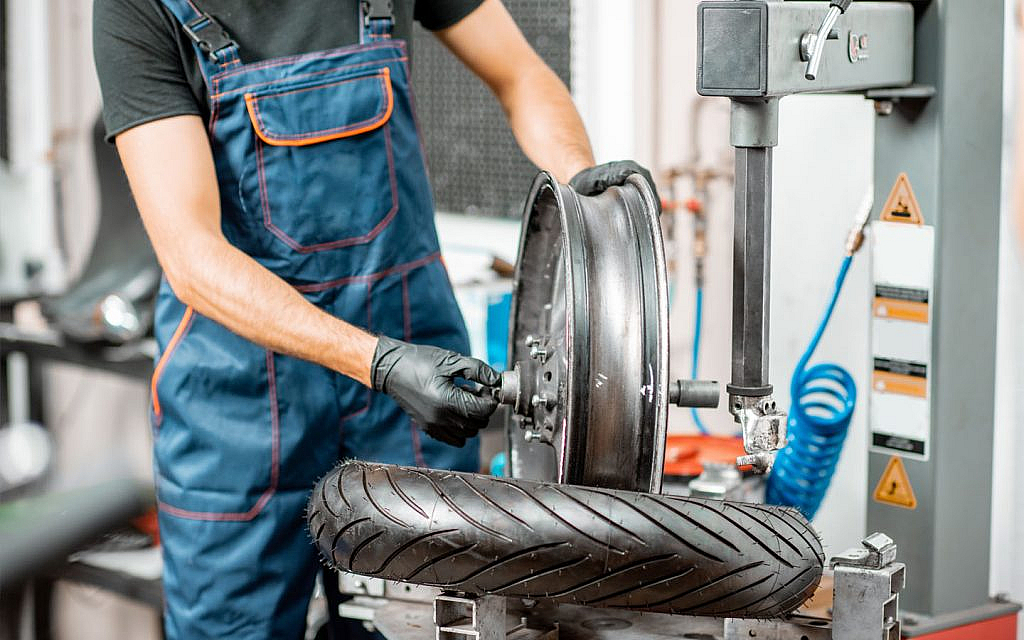 Even so, the competition can’t match their versatility, and they even come touring and whitewall versions.
Even so, the competition can’t match their versatility, and they even come touring and whitewall versions.
Tourers and commuters logging big miles on their machines need tires that can go the distance. For the many cruiser and standard motorcycles that cover thousands of miles in a season, the Michelin Commander 3s are our choice. They will run you roughly $300 to $450 a pair, but we haven’t seen a better balance of performance and sheer longevity in the touring/commuting class.
Michelin Commander III tires. RevZilla photo.
Part of the secret sauce is Michelin’s “Amplified Density Technology” that creates a denser compound. Expect up to 25,000 miles out of a rear tire, although it is not uncommon for Commander 3s to last even longer than that. In the long run, they may even be cheaper than buying two sets of other tires.
Metzeler Cruisetec tires. RevZilla photo.
If you’d trade some tire lifespan for improved grip, check out the Metzeler Cruisetec tires. They cost about as much as the Michelins, and average rear tire mileage is closer to 12,000 to 15,000 miles, but they stick better for riders who want to push their rides a little harder on tight roads, thanks to a softer edge compound for grip. The center compound is harder to improve tire life. The Cruisetecs also offer better performance in wet weather, which commuters and tourers can both appreciate.
They cost about as much as the Michelins, and average rear tire mileage is closer to 12,000 to 15,000 miles, but they stick better for riders who want to push their rides a little harder on tight roads, thanks to a softer edge compound for grip. The center compound is harder to improve tire life. The Cruisetecs also offer better performance in wet weather, which commuters and tourers can both appreciate.
If you ride a sporty motorcycle on the street, our top tire for 2022 is the juggernaut Michelin Road 5. They’re a favorite among spirited riders here at RevZilla, and they’re one of the most popular tires with our customers, too. Their cornering and handling performance is balanced with outstanding longevity (10,000 miles or more) for a tire that can truly do it all.
Michelin Road 5 tires. RevZilla photo.
An investment at $400 to $450 per pair, we absolutely think the Road 5 is worth the price of admission. One of the features that sets these tires apart from the pack is their Dual Compound technology for the class-leading grip and wear characteristics. Another upside is the XST Evo siping that maintains wet weather confidence as the tire wears. The Road 5 comes in standard, GT, and Trail versions to accommodate a wider range of motorcycles than you might expect.
Another upside is the XST Evo siping that maintains wet weather confidence as the tire wears. The Road 5 comes in standard, GT, and Trail versions to accommodate a wider range of motorcycles than you might expect.
When we assembled this Gear Guide, Michelin hadn’t released the updated Road 6 sport/street tires. They’re intended for the same riders as our top choice, so you may want to cross-shop the two versions to find the best option for your needs.
For a tire that is both street-legal and track-day-capable, we thoroughly recommend Dunlop’s Q3 Plus. These tires became instant hits as soon as they debuted, and they’ve been a sport favorite ever since. You can pick up a set for $375 to $410 depending on your bike’s tire sizes.
Dunlop Q3 Plus tires. RevZilla photo.
These tires offer neutral handling with easy turn-in. This is partly due to Dunlop’s Intuitive Response Profile that pairs perfectly with a good sport chassis. Dunlop also uses carbon fiber sidewall reinforcements for improved feel and feedback. The Q3 Plus tires hold a line with plenty of tolerance for additional inputs as the pace picks up. Dunlop uses a similar hard center rubber and soft outer rubber to the Road 5 above, but with a much sportier compound. A rear tire should last around 5,000 miles, or about half that if the tires are used for a few track days.
The Q3 Plus tires hold a line with plenty of tolerance for additional inputs as the pace picks up. Dunlop uses a similar hard center rubber and soft outer rubber to the Road 5 above, but with a much sportier compound. A rear tire should last around 5,000 miles, or about half that if the tires are used for a few track days.
Many ADV riders spend the majority of their miles on the road, but they don't want to pass up a good fire road or weekend expedition. For these riders, our choice is the Continental TKC70, the gold standard for its class. A set of these proven ADV tires runs $300 to $420. They’re available in a range of sizes that sprawls over most ADV tire sizes from dual-sports to open-class ADVs.
Continental TKC70 tires. RevZilla photo.
These tires offer a balance of road and dirt performance that’s right in line with how many of today’s popular ADVs are used. They start to falter in sand or mud, but they’re surprisingly sure-footed off asphalt. Continuous Compound Technology makes for a tire that handles highways and hero roads with the competence that made these tires a staple in the ADV world. Their ability to last up to 10,000 miles (with proper tire pressure maintenance) doesn’t hurt, either. For a tire better suited to off-road riding, you’ll want to look at our next choice.
Continuous Compound Technology makes for a tire that handles highways and hero roads with the competence that made these tires a staple in the ADV world. Their ability to last up to 10,000 miles (with proper tire pressure maintenance) doesn’t hurt, either. For a tire better suited to off-road riding, you’ll want to look at our next choice.
Adventure riders seeking better off-road performance won’t be disappointed by Continental’s TKC80 tires, a close relative of the TKC70s that’s better suited to dirt, sand, and mud. That said, TKC80s are considered a 50/50 road and dirt tire, so keep your expectations in check when the going gets rough. (For pushing the limits off-road, we recommend Pirelli’s Scorpion Rally tires, but we chose a 50/50 this year based on feedback from last year’s Gear Guides, as the Pirellis were too focused on dirt for most riders.)
Continental TKC80 tires. RevZilla photo.
TKC80s aren’t exactly cutting-edge technology. Instead, they’re a tried-and-true option for most ADV machines, and nothing comes close to their versatility in our experience. Wide blocks paddle through muck and sand with confidence. The blocks also give the TKC80s respectable tire life for their class: 4,000 miles out of a rear tire on the street, or about 2,500 off-road. We’re confident that a set of TKCs ($275 to $426 per pair) will be the right choice for all but the most aggressive ADV riders.
Wide blocks paddle through muck and sand with confidence. The blocks also give the TKC80s respectable tire life for their class: 4,000 miles out of a rear tire on the street, or about 2,500 off-road. We’re confident that a set of TKCs ($275 to $426 per pair) will be the right choice for all but the most aggressive ADV riders.
Mixing tire brands and models is common practice in the dirt, and here at RevZilla, our favorite combination for most dirt riding is a Bridgestone M59 up front and a Shinko 525 Hybrid out back. The world of dirt tires is too broad to cover with just one pick, or even an entire article, but this combination is our go-to for most dirt riding. Most of the RevZilla staff runs this exact combination on our personal rides.
Bridgestone M59 tires. RevZilla photo.
The M59 ($100) is known for its ability to maintain traction in gnarly conditions, from torn-up MX tracks to deep woods, and it’s reasonably durable, so you won’t be changing tires after just a few rides.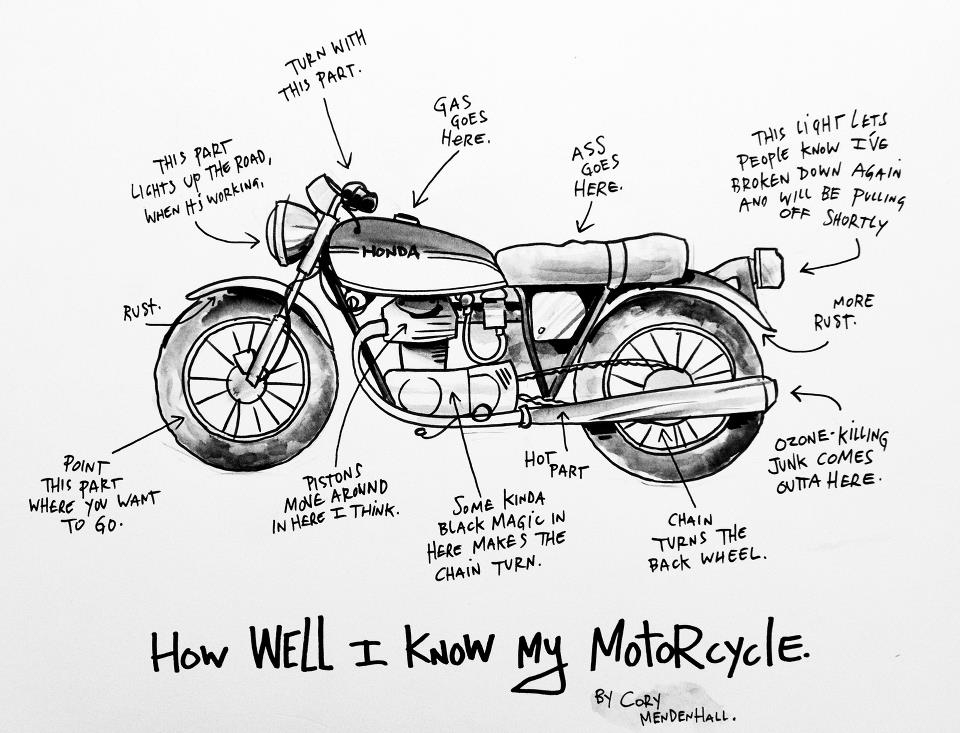
Shinko Cheater 525 tires. RevZilla photo.
The other half of our secret recipe is the Shinko 525 Hybrid “cheater” rear, which retails for about $55 to $95, depending on size. The 525 hooks up in any terrain with its dense lug design and sticky compound that almost grips like a trials tire. They’re especially good at clambering up rocky features. With the sharp M59 up front, and the 525 Hybrid for traction, the overall effect is a “point-and-shoot” tire combination that’ll perform in most environments. It’s also an excellent choice for beginner dirt riders who are trying multiple styles of dirt riding as they gain skills and experience.
That concludes our guide to the best motorcycle tires of 2022. We’re already spooning on more tires to test as we continue evaluating the latest and greatest gear, but for now, these are our favorite options. Questions? Don’t hesitate to reach out with any tire questions. Be sure to check out our other Gear Guides for all the best in moto.
Text: Andrey Rodionov, Dmitry Kolchugin
Photo: Nikita Kolobanov, Andrey Rodionov, rubber manufacturers
The tasks facing motorcycle tire developers are extremely complex and contradictory. On the one hand, tires must effectively transmit engine power, prevent stalls and slips, provide feedback and allow the rider to “feel the road”. On the other hand, to ensure a minimum tire wear rate, and make it uniform across the entire width of the working surface. Therefore, when choosing a tire for certain operating conditions, we will inevitably have to sacrifice something. nine0004
Our task is greatly facilitated by the experience of global motor rubber manufacturers. Based on the collected data, they have already calculated the optimal ratio of tire characteristics for different conditions, and are ready to offer us ready-made solutions.
There is a great variety of motor rubber models designed for a variety of operating conditions.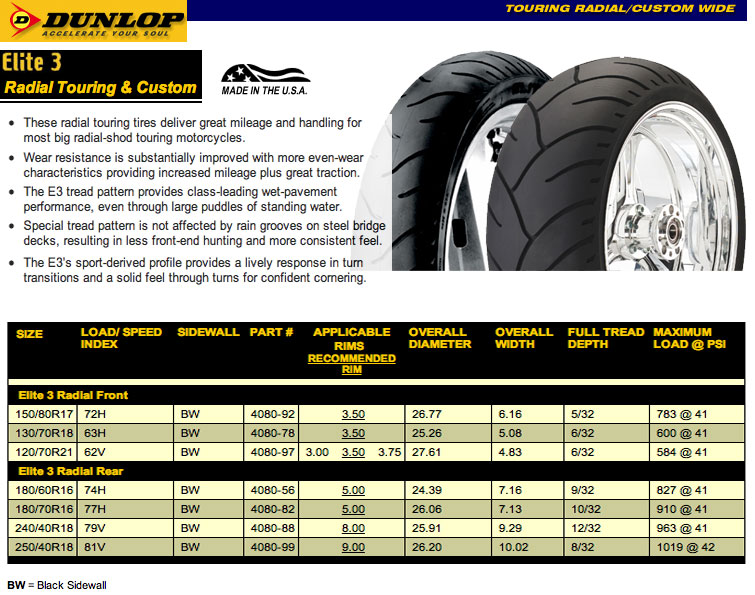 In this article we will consider its main types. Naturally, the focus will be on road models. We will touch on tires for motocross and enduro only in passing, since in order to fully cover this topic, we will need to write a separate voluminous material. nine0003 So, let's get started...
In this article we will consider its main types. Naturally, the focus will be on road models. We will touch on tires for motocross and enduro only in passing, since in order to fully cover this topic, we will need to write a separate voluminous material. nine0003 So, let's get started...
Motor rubber classification.
First, some boring theory.
Any reference book will tell you that motorcycle tires are Diagonal and Radial. The carcass of the diagonal motor rubber is made of cross layers of cord, which are directed diagonally from one side of the tire to the other. Each subsequent layer of cord is located at an angle of 90 degrees to the previous one. In some tire models, another layer is applied over the cross plies of the cord, directed in the direction of rotation of the tire. Such a layer is called a Belt, and the design of such a tire is Diagonally Belted. In a radial tire, the plies of the cord are located “radially”, at an angle of 90 degrees to the direction of tire rotation.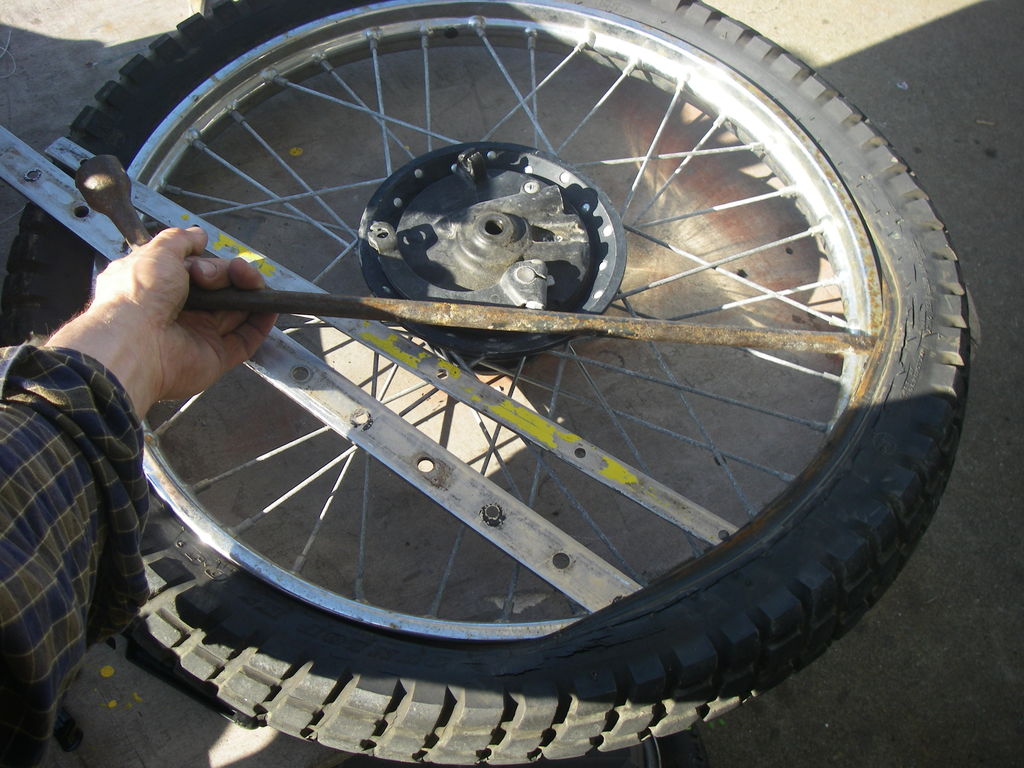
Cruiser and custom tires.
Bias tires are well suited for cruiser class motorcycles. Their sidewalls resist loads and impacts much better, so a heavily loaded motorcycle with a passenger on board is not a problem for such tires. But for powerful and fast power cruisers such as the Yamaha V-MAX II and Harley Davidson V-Rod, radial tires are more suitable. Their sidewalls are not as strong, so the height of such tires, as a rule, is much less. But they are less subject to internal heating and wear during movement, especially at high speeds. nine0004
Tires for vintage motorcycles.
There are many different types. Starting from vintage tires with a classic look for some Royal Enfield and old school custom, and ending with the high-tech Pirelli Phantom Sportscomp, which differs from most modern tires only in an elaborate tread pattern.
Small displacement tires.
Another class of tires that includes both radial and bias-ply tires is the small displacement tire. The popularity of checks and three hundred among young people forced the designers to produce tires for the most varied use of these motorcycles. Starting from "diagonals" for lovers of leisurely travel around Moscow (sometimes together), and ending with sports radial tires for those who do not get out of the karting track. After all, radial tires are much better suited for fast and accurate aerobatics. Their advantages are especially relevant in motorsport. nine0004
The popularity of checks and three hundred among young people forced the designers to produce tires for the most varied use of these motorcycles. Starting from "diagonals" for lovers of leisurely travel around Moscow (sometimes together), and ending with sports radial tires for those who do not get out of the karting track. After all, radial tires are much better suited for fast and accurate aerobatics. Their advantages are especially relevant in motorsport. nine0004
Racing slicks
Highly specialized product designed for competition and training of professional and amateur athletes, exclusively on sports tracks. Not approved for use on public roads. Most often they have a smooth surface without grooves and patterns, in order to achieve the maximum area of the wheel contact patch. The type of tire without grooves is commonly called - Slick. The sidewall shape of the racing tires is also optimized to maintain traction in extreme lean angles of the motorcycle when cornering not only with the knees, but also with the elbows.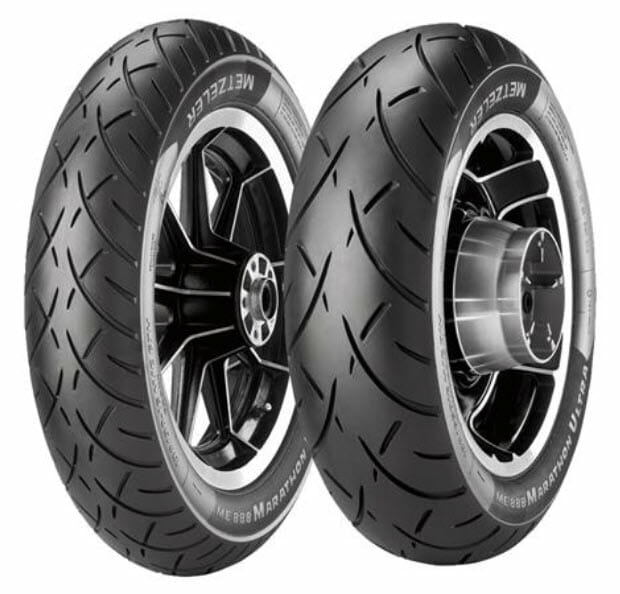 They have an extremely limited resource. As a rule, they are subject to replacement after a race run or practice session. Provides unparalleled traction. nine0004
They have an extremely limited resource. As a rule, they are subject to replacement after a race run or practice session. Provides unparalleled traction. nine0004
In addition to their appearance, these tires are characterized by a special temperature regime. Operating temperature: 80-100°C An unheated tire of this type differs significantly in its properties from the same wheel brought to operating temperature. Accordingly, all its high characteristics appear only after warming up to the specified parameters. That is why in sports competitions so much attention is paid to warming up the rubber with the help of special “warmers”, and during the so-called warm-up lap preceding the combat race. nine0004
Racing slicing
In some racing series, the use of smooth tires - slicks - is prohibited for marketing reasons, etc. Therefore, most manufacturers produce racing tires with the minimum number of grooves necessary to comply with the regulations of these competitions. Otherwise, these are, as a rule, the same uncompromising racing tires that are not intended for public roads. The formal exception is the Pirelli Diablo Supercorsa SC. The Pirelli website states that this model is suitable for driving on public roads. nine0004
Otherwise, these are, as a rule, the same uncompromising racing tires that are not intended for public roads. The formal exception is the Pirelli Diablo Supercorsa SC. The Pirelli website states that this model is suitable for driving on public roads. nine0004
But those who have experience with this rubber know that this is an exclusively racing product, not much different from classmates. Caution for newbies. If you decide to use such tires in the city, counting on an unprecedented grip, you will be bitterly disappointed. It is almost impossible to warm them up to operating temperature on public roads. Even after a series of accelerations and decelerations, the sidewalls will remain cold, and you will be indescribably surprised to go into slippery with a completely childish tilt of the motorcycle. For this reason, you should not buy Dunlop D212 and Pirelli Diablo Supercorsa SC for next to nothing with a still “live” middle from riders after the track. Especially if you have never encountered this rubber model before, even on a karting track. nine0004
nine0004
Street legal racing cut
The main difference from the previous class is in the temperature regime. These tires hold up much better when cold and don't run as hot. As a rule, it is: 60-80°C. Accordingly, their maximum grip properties are slightly lower. But the best grip in a cold state allows them to be allowed on public roads. And if you get to the training track on your own, then these tires are the best choice. These are the fastest tires allowed on city streets. nine0004
The presence of this class of tires is primarily due to the specific requirements of amateur competitions. In such races, for reasons of economy, the use of heating pads is often prohibited. And so that novice racers do not get killed in the very first turn due to cold tires, the regulations require the use of road tires approved for operation at the DOP.
Racing rain tires
A separate class of racing tires is rain racing tires. Their task is to completely remove water from the contact patch, including when the motorcycle is tilted, as well as the maximum level of grip on wet asphalt. When driving on dry roads, such tires are subject to rapid wear, as they have a very soft composition. nine0004
Their task is to completely remove water from the contact patch, including when the motorcycle is tilted, as well as the maximum level of grip on wet asphalt. When driving on dry roads, such tires are subject to rapid wear, as they have a very soft composition. nine0004
Supersport tires
Designed for more aggressive driving than conventional road racing tires. But in terms of grip, they still fall short of street legal racing “cutting”.
Sport road tires
Designed primarily for powerful sports and urban motorcycles. Fully suitable for operation on public roads. The available grooves, most often, are enough to drain water from the contact patch in case of light rain. At the same time, such tires retain most of the positive qualities of their brutal racing relatives on the sports track. What's more, the amateur rider who trains once a week doesn't have to worry about reaching the optimum operating temperature and pressure. nine0004
nine0004
Sports tires go into operating mode much faster than racing tires, and their parameters in a warm state and “cold” differ not so significantly. But you should not be under any illusions about the ultimate capabilities of such tires in a race, even an amateur one. The fantastic traction properties of racing tires brought to operating temperature are unattainable for sports tires. Therefore, in extreme conditions, be careful and keep your sobriety of mind.
But the resource of such tires is not limited to a couple of races on the highway, and ranges from 4000 km. up to 7000 km., depending on the engine power, the owner's piloting style, and his love to burn rubber, performing rolling burnout. So, sports tires are a reasonable choice for the owner of a sports or fast road bike, looking at the track or karting track 1-2 times a month to brush up on the relevant skills. nine0004
Road touring tires
For this type of rubber, its resource is of particular importance, since it is such rubber that is most often used by motorcycle travelers in their many thousands of runs around cities and countries. In addition to long routes with different quality of coverage, on which the tourist tire must be equally predictable and safe, long trips are usually associated with a large mass of transported belongings, without which the life of a motorcycle tourist becomes dull and bleak. And the tourist motorcycles themselves, in terms of their curb weight, are increasingly approaching diesel locomotives. nine0004
In addition to long routes with different quality of coverage, on which the tourist tire must be equally predictable and safe, long trips are usually associated with a large mass of transported belongings, without which the life of a motorcycle tourist becomes dull and bleak. And the tourist motorcycles themselves, in terms of their curb weight, are increasingly approaching diesel locomotives. nine0004
Therefore, a road touring tire must not only withstand long runs, but also withstand high loads well. At the same time, the requirements for the quality of adhesion give way to high predictability and "motorcycle feel" that allows even an inexperienced motorcyclist to feel and stop the development of slips and drifts at an early stage. The main task is not to pass the route at the highest speed, but to reach the final destination in the safest possible mode, while maintaining control over the motorcycle in any weather. nine0004
Accordingly, the water drainage grooves in such tires are more developed. And some models are specially optimized to maintain performance on wet roads. The resource of such tires, as a rule, ranges from 10,000 to 20,000 km. Best of all road-touring tires are suitable for city and travel on road and tourist motorcycles. Moreover, for the latter, given their large mass, special “reinforced” versions of tires are sometimes produced.
And some models are specially optimized to maintain performance on wet roads. The resource of such tires, as a rule, ranges from 10,000 to 20,000 km. Best of all road-touring tires are suitable for city and travel on road and tourist motorcycles. Moreover, for the latter, given their large mass, special “reinforced” versions of tires are sometimes produced.
Dual purpose tires
The high popularity of enduro motorcycles in Europe is beyond the understanding of domestic brains. Especially if you take into account the average European quality of the road surface. But the fruits of this popularity can be enjoyed by our compatriots who operate all-terrain vehicles.
Tires for "parquet" crossovers
The real heyday of this class of tires happened immediately after the appearance in 2010 of the Ducati Multistrada motorcycle, as well as many of its followers. Just like the Porsche Cayenne and BMW X5 crossovers, these bikes are only nightmares for serious off-road use. But nothing prevents them from amusing the pride of the owners on a trampled primer. nine0004
But nothing prevents them from amusing the pride of the owners on a trampled primer. nine0004
But back to tires. In terms of its composition and parameters, this is, as a rule, a specialized tourist rubber capable of withstanding long distances, having a tread that provides the minimum necessary “hook” on unpaved areas. It is designed for large and powerful motorcycles, has a high load capacity and speed index, is comfortable, provides good handling at high speeds and wet roads.
The resource of such tires, as a rule, reaches 20,000 km. And also, due to the obligatory presence of exclusively road dimensions in such models, every city madman can put them on his blue Drozd and rush off towards Magadan. nine0004
All-terrain tires
But, unlike in the automotive industry, the rise of the parquet crossover motorcycle class hasn't dampened the popularity of true touring enduros like the Bavarian Great Goose. Such motorcycles can travel on roads with any surface, as well as without it.
Therefore, tires designed for driving on asphalt and dirt in a ratio of 50/50 (as an option: 60/40) are produced by every world-class motor rubber manufacturer. Their task is to provide an acceptable grip on both dirt and asphalt roads. nine0004
The resource of such tires, as a rule, ranges from 13,000 to 15,000 km. It should be noted that the higher the rubber resource, the larger the contact patch of the tread with the coating. Therefore, with the growth of off-road characteristics of tires, the resource decreases. Also, the harder the composition of the rubber, the higher its survivability. But grip on wet roads with hard rubber will be noticeably worse.
Off-road tires
The most off-road, among the “civilian” tires, designed for the most desperate travelers and rally marathon participants. They allow you not to think about the presence of any road under the wheels. nine0004
These tires have a very strong carcass that provides the necessary margin of safety, which allows you to move on some models even on a punctured wheel.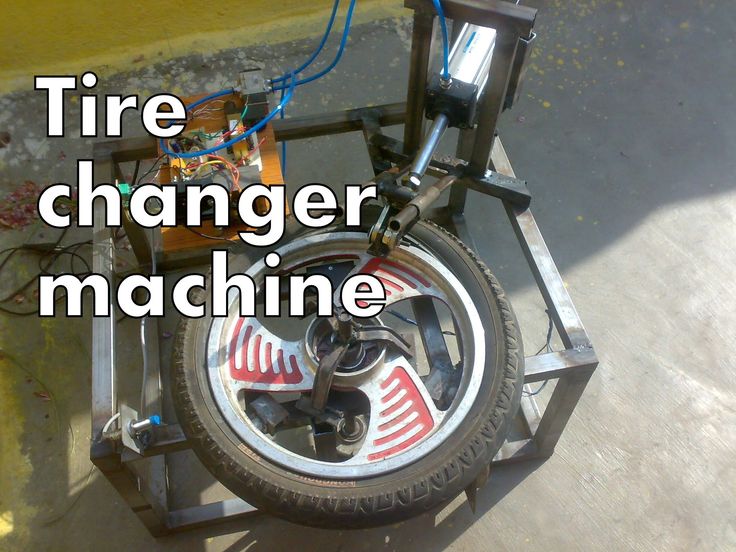 Often, a slight reduction in pressure will achieve more even wear and improve traction on wet pavement.
Often, a slight reduction in pressure will achieve more even wear and improve traction on wet pavement.
The resource of such tires is approximately 6000 - 12000 km.
Off-Road Sport Tires
Not for highway use only are not certified and do not have an OTP approval. These are special tires for motocross and enduro, not designed for high speeds. True, there are separate models from this category that are approved for use on the roads, but this is more of a nod to consumers. The resource on the roads of these tires is small, road characteristics, such as handling and braking, also leave much to be desired. nine0004
Therefore, we can rather talk only about the possibility of driving on these tires to real off-road without changing shoes. They have a diagonal design and are designed for use with chambers or mousses. They are mainly produced in dimensions R21, R19 and R18 and very rarely - R17. These tires can be divided into motocross tires and enduro tires.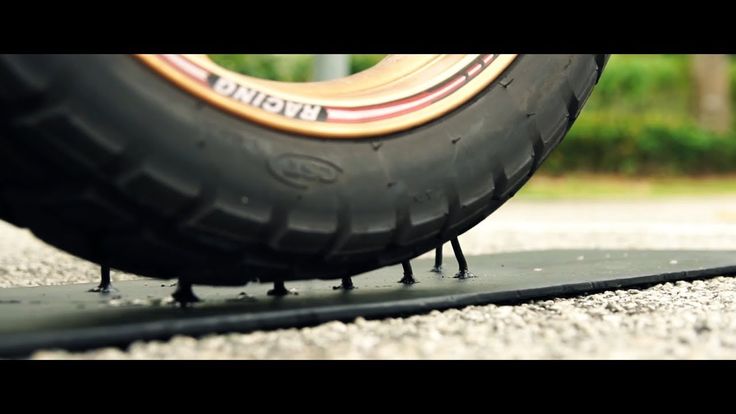
In each of these segments there are sports-oriented models, and amateur formats are more versatile (usually these are old models that no longer satisfy athletes, but are in demand). Unlike many other types of motor tires, motocross and enduro tires are consumables. They must work out their task with maximum effect and, by and large, the residual resource is not of interest to manufacturers. nine0004
Motocross tires
Motocross is a very intense, short ride with high shock and alternating loads from acceleration to braking on a pre-prepared track with relatively uniform soil. To do this, the cross tire has a hard cord, high and aggressive lugs and a relatively hard rubber compound.
Motocross tires are available in different types for different types of terrain. They differ in the tread pattern and the composition of the rubber used. The main pattern: on hard ground, tires with wide lugs and more elastic rubber are used, on soft ground - with rare tread blocks and harder rubber. The tire pressure used is 1.2-0.8 kPa: the softer the ground, the higher the pressure. nine0004
The tire pressure used is 1.2-0.8 kPa: the softer the ground, the higher the pressure. nine0004
Enduro competition tires
Enduro competitions include other additional types of obstacles: logs, fords, stones, rocks. To effectively overcome them, tires are used that combine the properties of tires for motocross - for overcoming unpaved areas, and trial - for other obstacles. For this, a very soft tire carcass is used, the maximum width and elasticity of the rubber compound for better grip.
The FIM European Enduro regulation provides for a limitation on the height of the tread used, so the block height on these tires is lower than on motocross tires. These tires are used with mousses instead of tubes to maximize the effect of low pressure inside the tire without the fear of blowing or spinning the tire. nine0004
All-terrain tires
Also, most manufacturers produce all-round types of tires, amateur format, combining cross-country and enduro characteristics.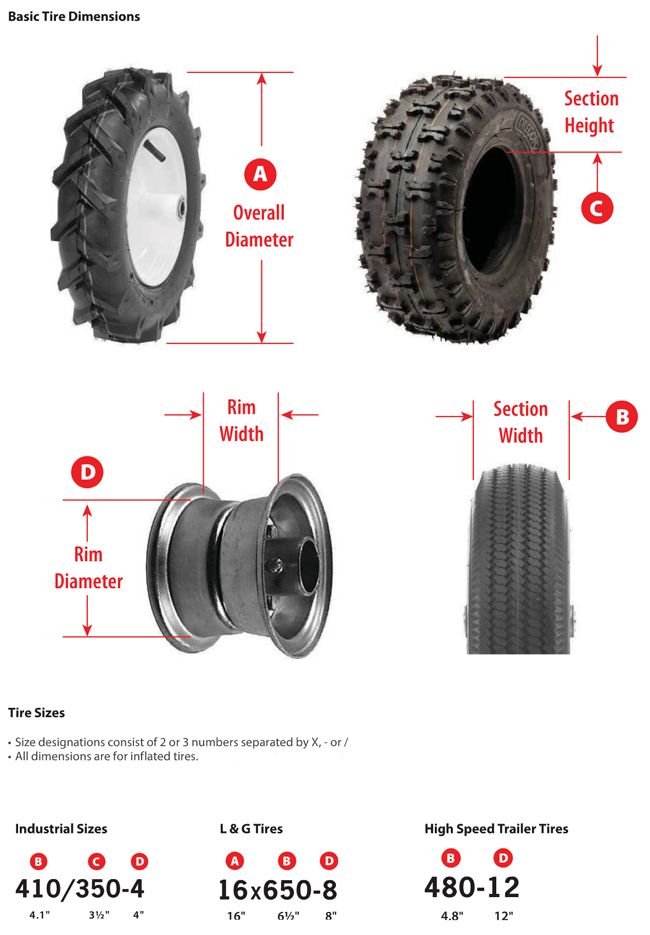 (Usually these are old models that no longer satisfy athletes, but are in demand.) Among the tires for enduro, there are also models of a universal format that are suitable for use in both cartri-cross and enduro, can be used with tubes and mousse.
(Usually these are old models that no longer satisfy athletes, but are in demand.) Among the tires for enduro, there are also models of a universal format that are suitable for use in both cartri-cross and enduro, can be used with tubes and mousse.
Running in road tires
Having bought and installed new tires on a motorcycle, do not rush to check its adhesion at maximum speeds and angles of inclination. Each new tire must undergo a run-in, during which its carcass, bandage and rubber layer are run in and reach the design characteristics. It is believed that the distance is 100 km. enough to break in a new wheel. After passing it, do not forget to check the pressure in the wheel, as well as inspect it for proper fit and possible geometry violations. If there are no problems, the wheel is ready for full operation. nine0004
It must be remembered that most of the motor rubber models are coated with a special compound before use, which prevents it from drying out and aging during storage. It is believed that rubber coated with this composition retains its properties for five years. After installing a new wheel, you must carefully erase this layer during break-in, gradually increasing the angle of the motorcycle to the maximum values \u200b\u200bthat you use during operation. But remember that by erasing the protective composition, you start the process of drying the rubber compound. nine0004
It is believed that rubber coated with this composition retains its properties for five years. After installing a new wheel, you must carefully erase this layer during break-in, gradually increasing the angle of the motorcycle to the maximum values \u200b\u200bthat you use during operation. But remember that by erasing the protective composition, you start the process of drying the rubber compound. nine0004
And after 2 years, regardless of the mileage, the wheel will need to be changed. It must be remembered that tires require running-in not only before operation, but also after winter storage. A layer of dried rubber forms on the surface of the wheel, which must be carefully wiped off during the first rides of the new season.
Tire pressure
If you bought your motorcycle new from an authorized dealer, it must have a sticker indicating the recommended pressure for the front and rear wheels. As a rule, this information is placed on the rear swingarm of the motorcycle. In the future, most motorcyclists are guided precisely by the numbers indicated in it, naively believing that they have optimal pressure for all occasions. In fact, the values indicated on the pendulum, at best, are suitable for rubber, which the motorcycle is equipped with at the factory. nine0004
In the future, most motorcyclists are guided precisely by the numbers indicated in it, naively believing that they have optimal pressure for all occasions. In fact, the values indicated on the pendulum, at best, are suitable for rubber, which the motorcycle is equipped with at the factory. nine0004
In reality, in order to find the optimal tire pressure, we need to take into account not only the motorcycle model, but also the tire model, the weight of passengers and luggage, as well as the conditions of this particular trip. And the first thing you need to build on is the rubber model installed on the motorcycle. Each motorcycle manufacturer posts on its website information about the recommended pressure in each of its tire models.
These data take into account not only the features of the type of motor rubber we are interested in (tourist, sports, etc.), but also the design features of each model and the technologies used in it. This is especially true when the motorcycle is used "not for its intended purpose.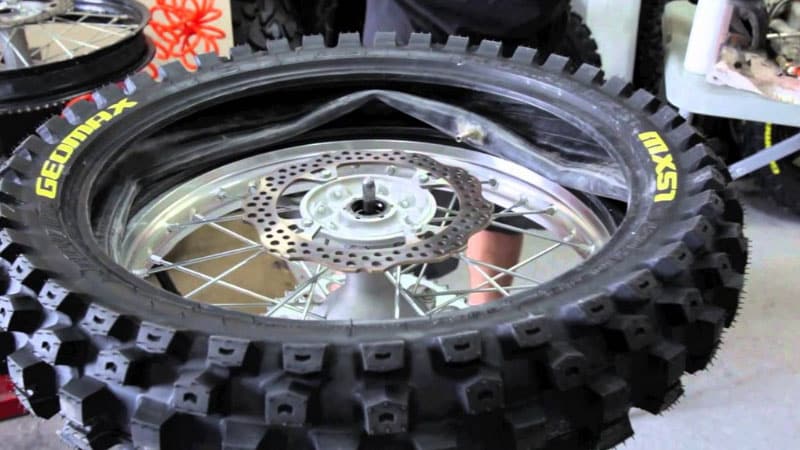 " nine0004
" nine0004
For example, when a sportbike is fitted with touring tires and set off on a journey; or when a road builder is used for kart training with uncompromising racing slicks. Remember, in such cases, you need to focus not on the recommendations of the motorcycle manufacturers, but on the information of the engineers who developed your tire model.
But that's not all! If we return to the ground and look at the real operating conditions of motor tires, we will see that on the same tires someone goes to work and to a party place, someone travels to neighboring regions and countries, and someone does not get out from the karting track. How to adjust the pressure in each of these cases? nine0004
General recommendations will be quite simple. Let's say you have a road bike with the recommended pressure on the swingarm: 2.25 BAR at the front and 2.5 BAR at the rear. If you have road or road-sport tires, then this pressure is more suitable for touring on a lightly loaded motorcycle. In this case, the contact patch will be smaller, the tire will dent less, and, accordingly, its wear will be slower. If you are traveling with a passenger and several cases for very long distances and at high speeds, it is better to increase the pressure in the rear wheel to 2.8 - 3.0 BAR. nine0004
In this case, the contact patch will be smaller, the tire will dent less, and, accordingly, its wear will be slower. If you are traveling with a passenger and several cases for very long distances and at high speeds, it is better to increase the pressure in the rear wheel to 2.8 - 3.0 BAR. nine0004
After running several thousand kilometers in this mode, the rear wheel will most likely form a flat ground. But the carcass of the tire will not suffer, and there will be no danger of its destruction. The pressure in the front wheel should not be raised above 2.5 BAR on powerful heavy motorcycles, and 2.3 BAR on medium-sized vehicles. If you increase the pressure in the front wheel even more, then the tire life will not increase from this, and the likelihood of losing grip during braking will increase.
In the city, motorcyclists most often ride without a passenger, make more maneuvers, accelerate and brake. The importance of the tire resource in this case gives way to grip properties. The cost of a mistake, loss of traction and unplanned slipping can be unreasonably high. Under these conditions, on an average motorcycle weighing about 200 kg, in road and sport tires, it makes sense to maintain a pressure of about 2.2 BAR in both tires. Thus, we increase the contact patch and help the rubber warm up faster for better grip. Naturally, the life of the tire decreases with decreasing pressure. But you need to be aware of what is more important: the durability of the rubber or the traction reserve. nine0004
The cost of a mistake, loss of traction and unplanned slipping can be unreasonably high. Under these conditions, on an average motorcycle weighing about 200 kg, in road and sport tires, it makes sense to maintain a pressure of about 2.2 BAR in both tires. Thus, we increase the contact patch and help the rubber warm up faster for better grip. Naturally, the life of the tire decreases with decreasing pressure. But you need to be aware of what is more important: the durability of the rubber or the traction reserve. nine0004
On powerful liter motorcycles, the load on the rear wheel - and therefore wear - is even higher. And only the owner himself chooses the balance between road grip and the wear rate of the rear wheel.
Finally, a go-kart or racing track. A place where tire resource does not play any role. Only the coupling parameters of the rubber with the canvas of the race track are important. Numerous experiments and experiments undertaken by people who regularly test motorcycles on karts and racing tracks - motorcycle journalists, experts and athletes - show that most sports, road and road-touring tires provide the best traction at a pressure of 2. 1 BAR - on the front wheel , and 1.9BAR - on the back, on cold tires. For some rubber models, this value may differ slightly, but in most cases its difference fits into the error of a conventional pressure gauge manufactured in the People's Republic of China.
1 BAR - on the front wheel , and 1.9BAR - on the back, on cold tires. For some rubber models, this value may differ slightly, but in most cases its difference fits into the error of a conventional pressure gauge manufactured in the People's Republic of China.
Lowering the pressure further does not add traction and only worsens the handling of the motorcycle. When the pressure in the front wheel drops below 1.9 BAR, when cornering, the bike's handlebars begin to bend, that is, it tries to turn in the direction of the turn. If the rear tire loses pressure to 1.6 BAR, then in corners the rear of the motorcycle begins to float on the pavement, there is a feeling that is best described by the word “squish”. nine0004
Considering that the pressure applied on sports tracks allows for the greatest traction properties of motor tires, many people use it when driving in the city, where the margin of the handle can be a great help when making detours or during emergency braking. But you need to understand that tire wear at such a pressure will be higher, and its resource will be less.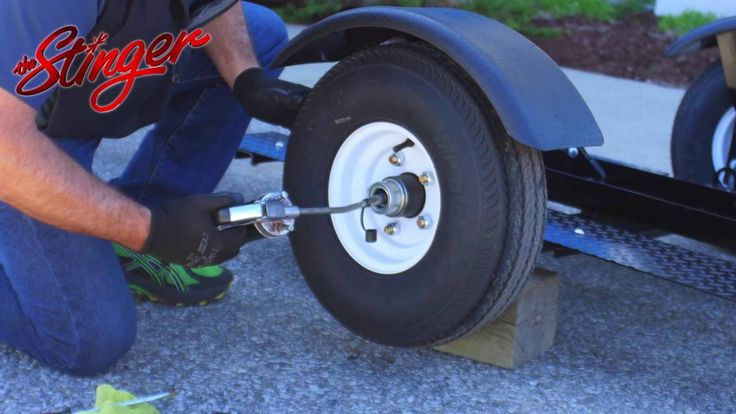
Special mention should be made of powerful sport bikes, which often have a recommended pressure of 2.5 - 3.0 BAR on the swingarms. It must be understood that such motorcycles wear tires much more intensively. And the resource of the same rear wheel model on a road bike and on some Eradin will differ by 2 times. Partly recommended high pressure allows you to slightly extend the difficult life of the “cylinders” on such motorcycles. But don't be under any illusions. When you try to go through a "knee" turn, such a high pressure in the wheel can easily send you into a slippery. nine0004
If, on the other hand, you regularly train on sports tracks, then, most likely, special racing tires are already installed on your motorcycle. As already mentioned, this rubber has a special thermal regime. And if for ordinary sports rubber the working temperature is considered to be 50 ° C - 60 ° C, then the temperature of racing rubber in a warm state reaches 100 ° C. Naturally, the pressure in such rubber in the last laps of the race and in the cold state is seriously different.
As a rule, the pressure in the rear wheel "cold" in such tires ranges from 1.4 BAR to 1.6 BAR, and in the front - from 1.5 BAR to 2.1 BAR. Such low numbers are often shocking to beginners who see the 2.9 on the swingarm of their new "liter" sportbike.BAR. But it is these indicators that allow the tires to quickly warm up to the design temperature and increase the pressure in the wheels to operating values.
In this case, if you are not an experienced road rider who plays with tire pressure, adjusting the behavior of the motorcycle to the characteristics of different tracks, we recommend that you strictly adhere to the values recommended for your particular racing tire by its manufacturer.
Cross tire pressure
Motocross tire pressure is 1.2-0.8 BAR. The main rule: the softer the soil, the higher the pressure. In this case, it is necessary to take into account both the properties of a particular track and the style of the rider. nine0003 In classic enduro, mousses with different pressures are used instead of chambers: 0.4-0.9 BAR, depending on the type of tracks.
nine0003 In classic enduro, mousses with different pressures are used instead of chambers: 0.4-0.9 BAR, depending on the type of tracks.
Selection of tires of non-standard size
On various forums, you can often find questions from novice motorcyclists regarding the possibility of installing a rear wheel wider than the stock motorcycle. Most often this is due to the fact that in their eyes a wide rear wheel looks more sporty and attractive compared to a narrow one. Often, some draw analogies with car wheels of a larger diameter and width. We will not argue that no matter how wide the wheel is on the old Super Truck, in the eyes of beautiful strangers, it still will not compete with the shiny and illuminated Golda. And just try to understand the physics of the process. nine0004
So, what can we expect if we firmly decided to install a non-standard rear wheel with a wider width on the motorcycle.
The first problem we will face is that the rim remains the same width as before. That is, a wheel of greater width, stretched on a narrow rim, does not become wider. It flattens and becomes higher than stock. Its diameter grows, the speedometer starts to lie, the back of the motorcycle rises a little. But most importantly, the tire profile carefully calculated by the manufacturer is violated. nine0004
That is, a wheel of greater width, stretched on a narrow rim, does not become wider. It flattens and becomes higher than stock. Its diameter grows, the speedometer starts to lie, the back of the motorcycle rises a little. But most importantly, the tire profile carefully calculated by the manufacturer is violated. nine0004
In 2012, in the Russian championship SHKMG, a single type and size of rubber was approved for all classes and types of motorcycles - 190/55/17. Given that the rear wheel disc of 600cc sportbikes is designed for size 180/55/17. Such a replacement did not bring big changes to the behavior of the motorcycle. Although some athletes, for example, Ilona Sergeeva, noted the worst grip on non-standard rubber in the extreme angles of inclination.
Another example of using a narrow rim and wide tire is the KTM RC 390 and KTM Duke 390. They come stock with a 150/60-17 rear wheel. This means that we will not be able to use the entire surface area of the tire, and the contact patch will be lower than calculated for this model in this size. All this raises questions regarding the optimality of the selected rubber size. We noticed this nuance back in May 2014, during the KTM Duke 39 test.0. And in July 2015, while shooting the RC 390 at the Firsanovka karting track, MotoRRika team rider Ivan Gorev did not take into account this feature of the motorcycle and sent KTM into slippery conditions, missing the rear wheel.
All this raises questions regarding the optimality of the selected rubber size. We noticed this nuance back in May 2014, during the KTM Duke 39 test.0. And in July 2015, while shooting the RC 390 at the Firsanovka karting track, MotoRRika team rider Ivan Gorev did not take into account this feature of the motorcycle and sent KTM into slippery conditions, missing the rear wheel.
If we're not happy with a simple tire change while keeping the stock rim, and we decide to go further with a wider rear rim on our bike, then other problems stand in our way. It is necessary that the disk and the wheel are normally located in the pendulum and do not touch it when moving. The driven star of a non-standard disk can be shifted to the side relative to the leading star, which will quickly "finish" the chain of the motorcycle. If we managed to get around all these problems, then, as planned, we get a motorcycle with a rear wheel wider than the original. nine0004
If we try to ride such a motorcycle, we will notice that its handling has noticeably deteriorated. And now it takes more effort to "put" the bike in a turn. Why did it happen? The fact is that a motorcycle with a wide rear wheel has to lean at a greater angle, applying more effort, to pass the same turn at the same speed. That is why engineers and experts are well aware of the rule: the more wheels already installed on a motorcycle, the more willingly it “dives” into a turn and steers easier. nine0004
And now it takes more effort to "put" the bike in a turn. Why did it happen? The fact is that a motorcycle with a wide rear wheel has to lean at a greater angle, applying more effort, to pass the same turn at the same speed. That is why engineers and experts are well aware of the rule: the more wheels already installed on a motorcycle, the more willingly it “dives” into a turn and steers easier. nine0004
Therefore, even on powerful "liter" sportbikes, for which every square millimeter of wheel grip with asphalt is worth its weight in gold, you rarely see rear tires wider than 190mm. or 200mm.
Wheel marking
180/55 ZR 17
Profile width in mm, 180.
Profile height in percent of width, 55.
Tire design radial, ZR.
Rim diameter in inches, 17.
M/C is an abbreviation for motorcycle (found on tires that have car sizes). nine0003 73 - load index.
W - speed index.
Radial - radial tire construction.
Tubeless - tubeless (sometimes referred to as TL), TT (Tube Type) - chambered.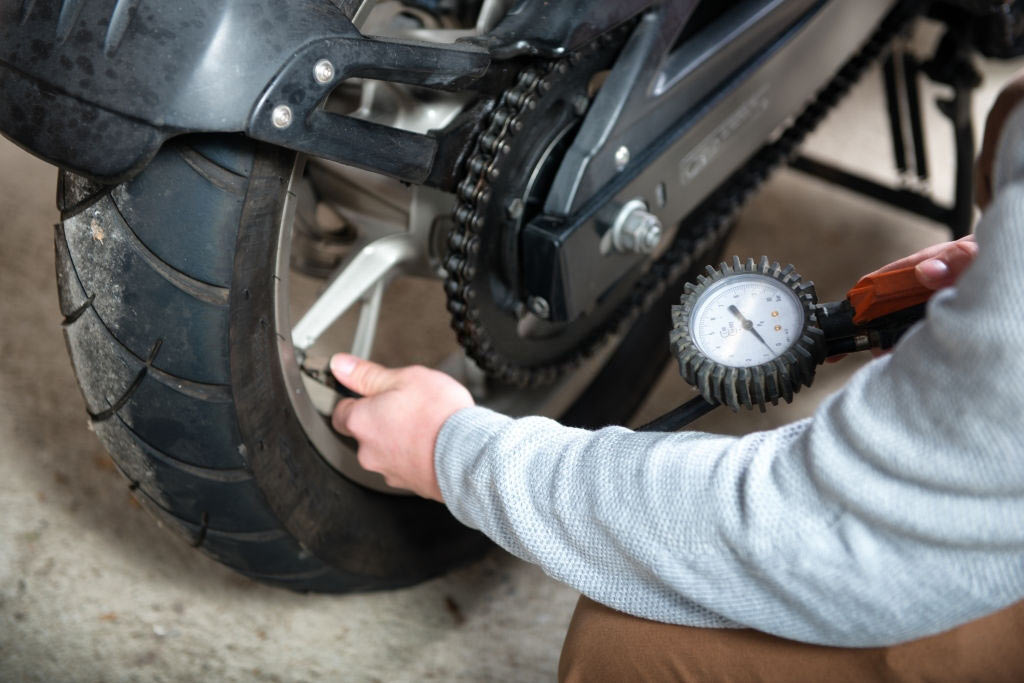
Continental is the name of the manufacturer.
ContiRoadAttac2 GT is the name of the model.
<=Rear - the arrow indicates the direction of rotation of the wheel
www.conti-moto.ru - the manufacturer's website.
The DOT abbreviation indicates that the tire complies with the safety regulations of the US Department of Transportation.
The letter “B” in a circle is the approval mark according to the test results under UNECE regulations, the number next to it is the country where the test was carried out. nine0003 Date of manufacture of the tire - the last four digits in an oval, for example 3811 38th week of 2011.
Introduction
How to decipher the marking of motorcycle tires
Correspondence table for metric and inch tire marking systems
Motorcycle tires are impossible to choose correctly if you do not understand their sizes. Otherwise, at best, you risk bringing just a useless piece of rubber from the store. To determine the sizes, we have prepared a short decoding method and a comparison table of tire dimensions.
Otherwise, at best, you risk bringing just a useless piece of rubber from the store. To determine the sizes, we have prepared a short decoding method and a comparison table of tire dimensions.
Any motor rubber has a sea of information on the sidewall about the properties, purpose and, of course, size. We need to figure it out, and then compare the readings with the table. You can learn more about motorcycle tire labeling in our previous article. nine0004
As a rule, the main marking on the side of the tire looks like this: 120/80 R16 59S. This is the so-called metric marking. Let's understand it in more detail:
120 - profile width from edge to edge of the tread, expressed in millimeters.
80 - profile height, expressed as a percentage.
R - radial type of construction.
16 - diameter of the landing area. This indicator should correspond to the same diameter of the rim on which the tire will be put on.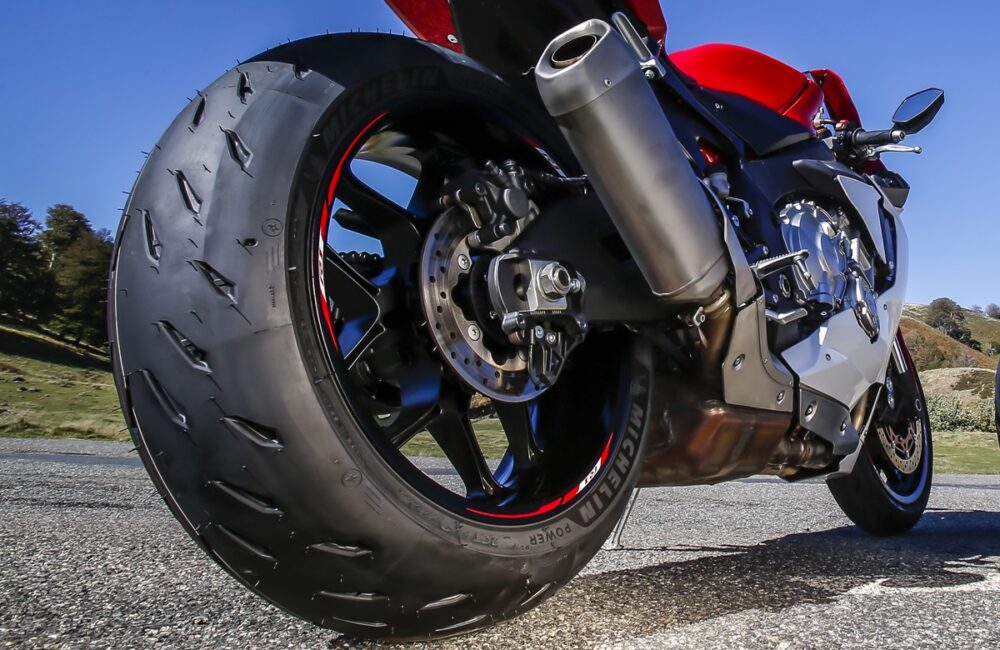 nine0004
nine0004
59 - load index, or the maximum weight that the tire can withstand without loss of performance. We are looking for it in the table:
| Tire load index | |||||||
| 40 | 140 | 53 | 206 | 66 | 300 | 79 | 437 |
| 41 | 145 | 54 | 212 | 67 nine0369 | 307 | 80 | 450 |
| 42 | 150 | 55 | 218 | 68 | 315 | nine0372 462 | |
| 43 | 155 | 56 | 224 | 69 | 325 | 82 | nine0002 475 |
| 44 | 160 | 57 | 230 | 70 | 335 | 83 | 487 |
| nine0002 45 | 165 | 58 | 236 | 71 | 345 | 84 | 500 |
| 46 | 170 | 59 | 243 | 72 | 355 | 85 | 515 |
| 47 | 175 | 60 nine0369 | 250 | 73 | 365 | 86 | 530 |
| 48 | 180 | 61 | 257 | nine0372 375 | 87 | 545 | |
| 49 | 185 | 62 | 265 | 75 | nine0002 387 | 88 | 560 |
| 50 | 190 | 63 | 272 | 76 | 400 | 89 | 580 |
| 51 | 195 | 64 | 280 | 77 | 412 | 90 | 600 nine0369 |
| 52 | 200 | 65 | 290 | 78 | 425 | 91 | 615 |
S is an index of the speed at which the bike can move without losing ride stability, grip and other useful tire characteristics. The value is also in a special table:
The value is also in a special table:
The models in the top are arranged in terms of price / quality ratio. In the process of writing it, we were guided by the reviews of amateur bikers, professional tests, and were also guided by our own subjective opinion and many years of experience with tires.
| Speed index | Maximum speed, km/h |
|---|---|
| A | 40 |
| B | 50 |
| C | 60 |
| 65 | |
| E | 70 |
| F | 80 |
| G | 90 |
| J | 100 |
| K | 110 |
| L | 120 |
| M | nine0372 |
| N | 140 |
| P | 150 |
| Q | 160 |
| R | 170 |
| S | 180 |
| T | 190 |
| U | 200 |
| H | 210 |
| V | 240 |
| W | 270 |
| Y | 300 |
| VR | >210 |
| ZR | >240 |
| (W) | >270 |
| Z | >300 |
This method of labeling tires is followed by most manufacturers, but there are those who prefer alternative types, where sizes are indicated in inches. For example, this one is 3.25H-19. Everything is simple here: 3.25 is the tire width expressed in inches, H is the speed index, 19 is the bore diameter.
For example, this one is 3.25H-19. Everything is simple here: 3.25 is the tire width expressed in inches, H is the speed index, 19 is the bore diameter.
Sometimes an inch designation can be placed instead of the usual millimeter, for example, like this: 4.60/80 R16. nine0004
There is a rather rare alpha system created primarily for sports tourists. For example, this type of MM90S-16, where: MM - profile width in inches (3.75), 90 - profile height in percent; S - speed index, 16 - diameter of the landing rim of the tire.
| Marking alpha | Width in inches |
|---|---|
| MG | 2.75 nine0369 |
| MH | 3.00 |
| MJ | 3.25 |
| ML | 3.50 |
| MM | 3.75 |
| MN | nine0002 4. 00 00 |
| MP | 4.25 |
| MR | 4.50 |
| MS | 4.75 |
| MT | 5.00 |
| MU nine0369 | 5.50 |
| MV | 6.00 |
To make it easier for you to determine what the inch size corresponds to in the metric system and vice versa, we have prepared a comparison table for you.
| Tire size in. | Load index nine0369 | Permissible rim width, inch. | Tire size | ||||
| Alpha | Metric | ||||||
| Standard | Reinforced. | 100 | 90 nine0369 | 80 | |||
| 2. | 40 | 46 | 1.50-1.85 | MH 90-16 | 80/100-16 | 80/90-16 | nine0/80-16 |
| 3.00-16 | 40 | 48 | 1.60-2.15 | MH 90-16 | 90/100-16 | 90/90-16 | 100/80-16 | nine0370
| 3.25-16 | 48 | 55 | 1.85-2.50 | MJ 90-16 | 100/100-16 | 100/90-16 | 110/80-16 |
| nine0002 3.50-16 | 52 | 58 | 1.85-2.50 | ML 90-16 | 100/100-16 | 100/90-16 | 110/80-16 |
| 4.60-16 nine0369 | 58 | 59 | 1. | MM 90-16 | 100/100-16 | 110/90-16 | 120/80-16 |
| nine0369 | |||||||
| 2.75-17 | 41 | 47 | 1.50-1.85 | MH 90-17 | 80/100-17 nine0369 | 80/90-17 | 90/80-17 |
| 3.00-17 | 41 | 50 | 1.60-2.15 | MH 90-17 | 90/100-17 | nine0/90-17 | 100/80-17 |
| 4.50-17 | 50 | 67 | 2.15-3.00 | MR 90-17 | 110/100-17 | 130/90-17 | 140/80-17 |
| 4.60-17 | 50 | 62 | 1. | MS 90-17 | 100/100-17 | 110/90-17 | 120/80-17 |
| 5.10-17 | 50 | 67 | 2.50-3.50 | MT 90-17 | 110/100-17 | 130/90-17 | 140/80-17 |
| 2.75-18 | 42 | 48 | 1.50-1.85 | MH 90-18 | 80/100-18 | 80/90-18 | 90/80-18 |
| 3.00-18 | 47 | 52 | 1.60-2.15 | MH 90-18 | nine0372 90/90-18 | 100/80-18 | |
| 3.25-18 | 52 | 59 | 1. | MJ 90-18 | 100/100-18 | 100/90-18 | 110/80-18 |
| 3.50-18 | 56 | 62 | 1.85-2.50 | ML 90-18 | 100/100-18 | nine0372 110/80-18 | |
| 3.60-18 | 51 | 62 | 1.85-2.50 | MH 90-18 | 100/100-18 | nine0/90-18 | 100/80-18 |
| 4.00-18 | 64 | 69 | 2.15-3.00 | MN 90-18 | 110/100-18 | 120/90-18 | 130/80-18 |
| 4.10-18 | 60 | 69 | 1.85-3.00 | ML 90-18 | 100/100-18 | 100/90-18 | 110/80-18 |
| 4. | 64 | 69 | 1.85-3.00 | MM 90-18 | 110/100-18 | 110/90-18 | 120/80-18 | nine0370
| 4.25-18 | 66 | 69 | 2.15-3.00 | ML 90-18 | 110/100-18 | 120/90-18 | 130/80-18 |
| nine0002 4.60-18 | 63 | 69 | 1.85-3.00 | MR 90-18 | 110/100-18 | 120/90-18 | 130/80-18 |
| nine0369 | |||||||
| 3.00-19 | 49 | 54 | 1.60-2.15 | MH 90-19 | nine0002 90/100-19 | 90/90-19 | 100/80-19 |
| 3. | 54 | 54 | 1.85-2.50 | MJ 90-19 | 100/100-19 nine0369 | 100/90-19 | 110/80-19 |
| 3.50-19 | 54 | 57 | 1.85-2.50 | ML 90-19 | 100/100-19 | nine0002 100/90-19 | 110/80-19 |
| 3.60-19 | 52 | 54 | 1.85-2.50 | MH 90-19 | 100/100-19 | 90/90-19 nine0369 | 100/80-19 |
| 2.75-21 | 45 | 54 | nine0372 MH 90-21 | 80/100-21 | 80/90-21 | 90/80-21 | |
| 3. | |||||||